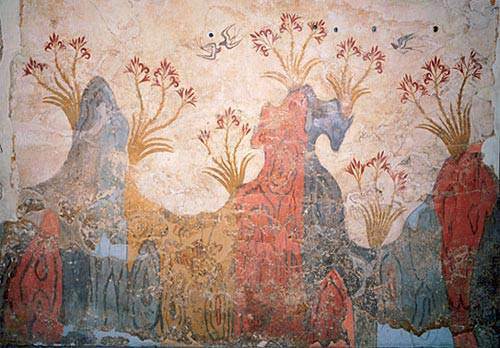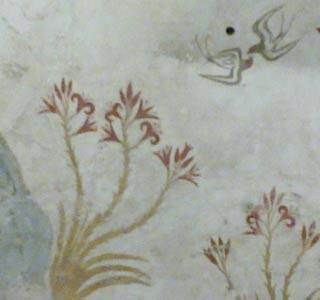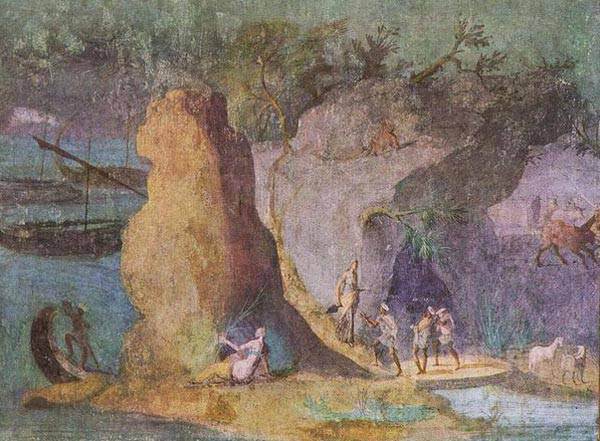Unknown author/s · Spring Fresco

Around 1550 – 1500 b.c. Fresco painting. Central wall: 250×260 cm. Side walls: 250×222 y 250×188 cm. National Archaeological Museum, Athens
The site of Akrotiri, on the spectacular island of Santorini, is one of the jewels of the Minoan civilization. The Theran eruption in the mid-second millennium BC buried the city, preserving several frescoes of exceptional importance in an excellent state of conservation. These include the so-called “fresco of the antelopes”, the “fresco of the boxers, ” the impressive “Marine festival fresco”, and the one that is arguably the most beautiful of all of them, the “Spring Fresco”.
The “Spring Fresco” occupied three walls from Room Delta 2 on the Akrotiri Site, being the only “triptych” found on the whole settlement. It is an marvelous work of art, depicting a brightly colored rocky landscape dotted with blossoming lilies and flying swallows, painted with remarkable precision.
The apparently simple composition contains some elements of great interest. As the Thera Foundation website explains, some romantic critics believed that the pair of swallows from the central wall are “kissing birds”, but ornithologists now suggest that they are two male birds fighting. The blossoming lilies that dominate the composition help us to imagine the landscape of the island before the devastating Theran eruption.
Although a contemporary observer could find this Minoan fresco “dull” or even “boring”, even those who do not appreciate ancient art should take in consideration the exceptional artistic milestone it represents: perhaps for the first time in the history of art, an artist decided to look around and create art from the surrounding landscape
G. Fernández – theartwolf.com

Detail of the fresco. Photo by Konstantinos Koukopoulos.
Follow us on:

